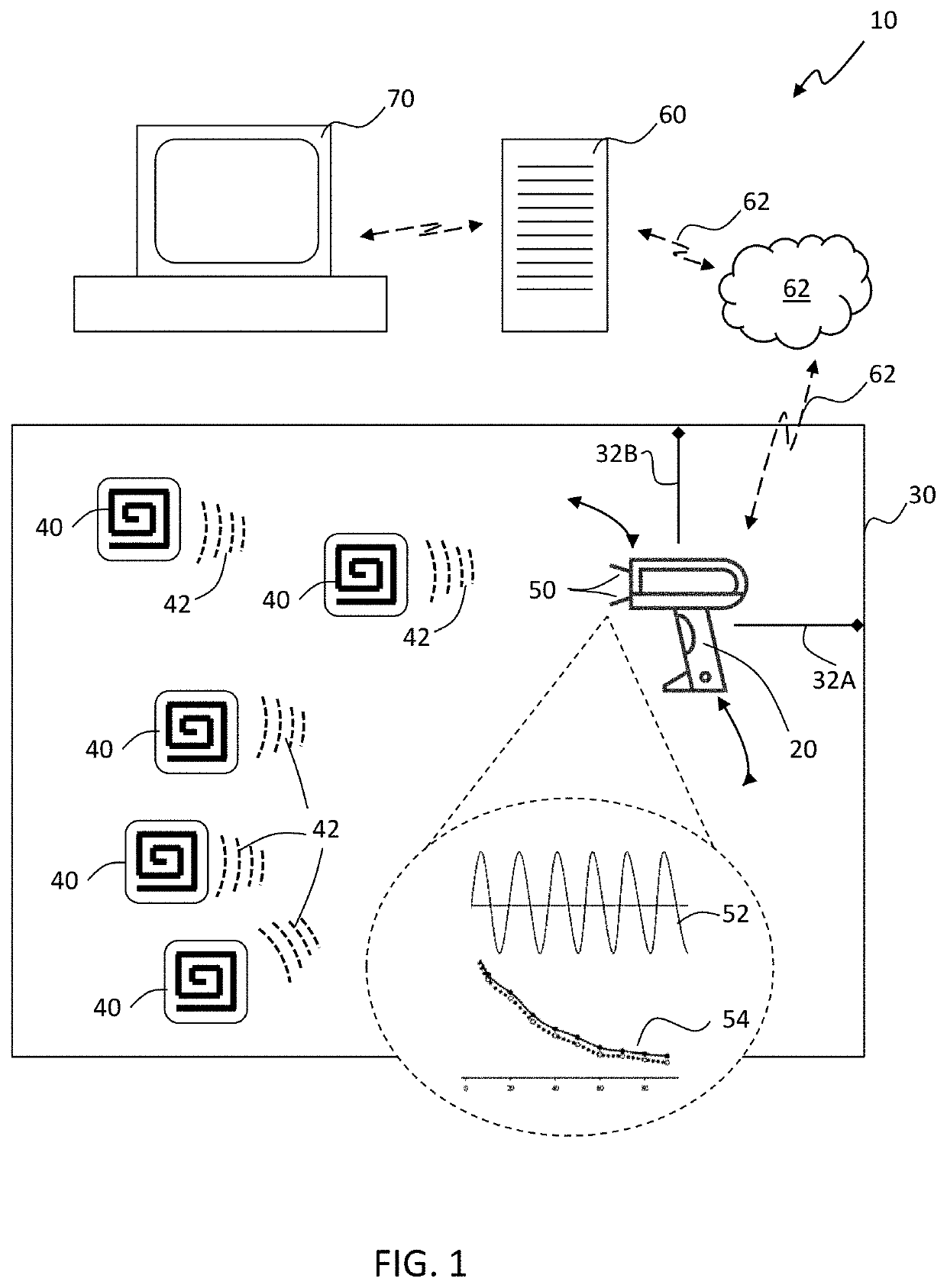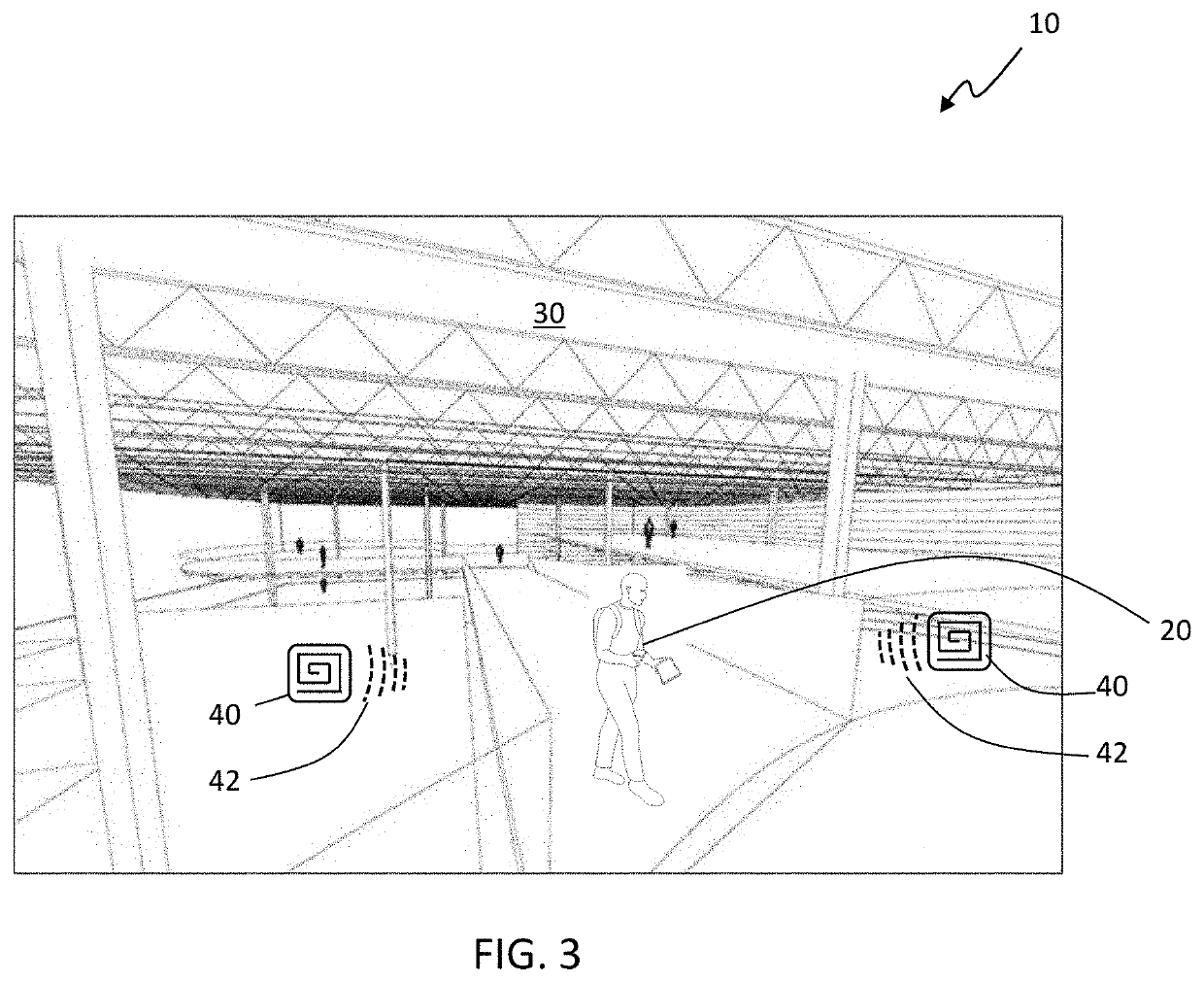Advanced micro-location of RFID tags in spatial environments
a technology of spatial environment and micro-location, applied in the field of advanced micro-location of rfid tags in spatial environments, can solve the problems of time-consuming, expensive, complex inventory management in retail and commercial buildings, and process can take dozens of employees and many hours to compl
- Summary
- Abstract
- Description
- Claims
- Application Information
AI Technical Summary
Benefits of technology
Problems solved by technology
Method used
Image
Examples
Embodiment Construction
[0021]FIG. 1 is a diagrammatical illustration of a system for micro-location of RFID tags within a spatial environment 10, in accordance with a first exemplary embodiment of the present disclosure. The system for micro-location of RFID tags within a spatial environment 10, which may be referred to herein simply as ‘system 10’ includes mobile platform 20 having a known location within a three-dimensional (3D) space 30. A plurality of radio frequency identification (RFID) tags 40 is located within the 3D space 30. A plurality of RFID antennas 50 are mounted on the mobile platform 20. Backscatter signals 42 of at least one of the RFID tags 40 are collected by at least one of the plurality of RFID antennas 50 and time-synchronized with the known location of the mobile platform in the 3D space 30 at a time of collection. A computerized processing device 60 is in communication with the plurality of RFID antennas 50 through a network connection 62. The computerized processing device 60 per...
PUM
 Login to View More
Login to View More Abstract
Description
Claims
Application Information
 Login to View More
Login to View More - R&D
- Intellectual Property
- Life Sciences
- Materials
- Tech Scout
- Unparalleled Data Quality
- Higher Quality Content
- 60% Fewer Hallucinations
Browse by: Latest US Patents, China's latest patents, Technical Efficacy Thesaurus, Application Domain, Technology Topic, Popular Technical Reports.
© 2025 PatSnap. All rights reserved.Legal|Privacy policy|Modern Slavery Act Transparency Statement|Sitemap|About US| Contact US: help@patsnap.com



